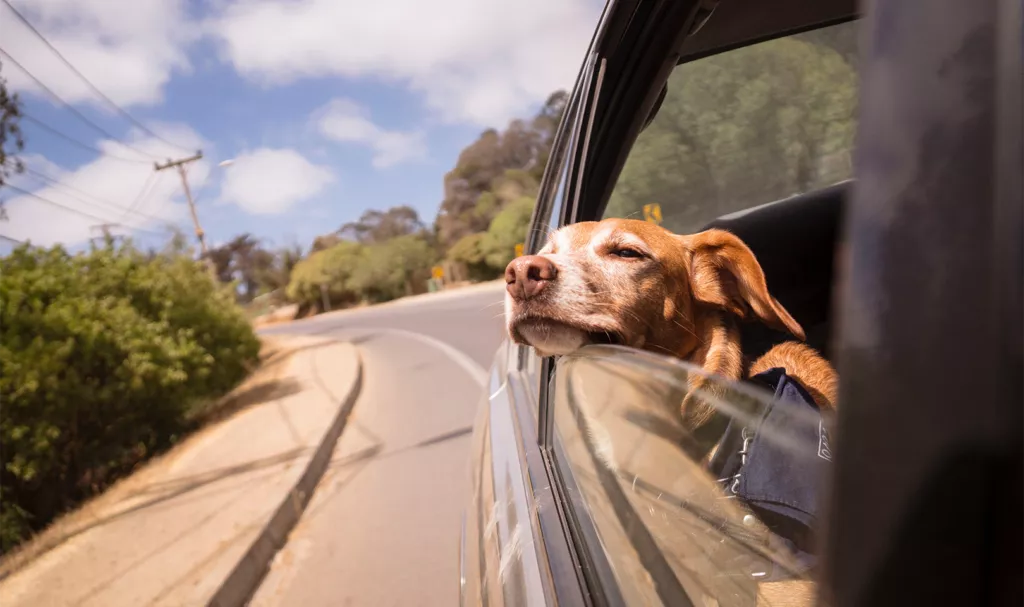IndeVets: International Pet Travel & Health Certificates


Now that the world is starting to open up again, more and more people are beginning to travel again and bring their pets with them. However, one part of traveling with animals that most people don’t think about is health certificates. All pets need one for both interstate and international travel, and these can only be attained by a USDA-certified veterinarian. Health certificates are generally done 5-10 days before travel. Below are some tips to help you and your vet get everything ready for your trip. This article will focus on international health certificates (HC) for dogs. Other species have different requirements.
*Disclaimer* Please be aware that any health certificate, paperwork, projected timelines, costs of import/export, and all information is ultimately the responsibility of the owner. Legally, as vets, we are there to verify vaccine records, affirm health status, and verify identification. We will do our best to ensure you have everything you need and are ready to go before your trip.
Step 1- Find a USDA-certified veterinarian
Use this link to find a USDA-certified veterinarian. Please be aware not all USDA vets are publicly listed, so if your vet isn’t listed, please call the office first. There are also different categories based on species. Both categories I and II can write HC for dogs and cats.
Make sure you book an appointment with your vet for a consultation as soon as you know you need to travel. Every country has different import requirements that could take up to 6 months to plan. Together you can go through the requirements and make a timeline for further vaccine appointments, micro-chipping, arranging for any required testing, etc. The actual HC will be completed and signed by your vet within ten days of travel (usually) and will be booked as a separate appointment.
Step 2- Research your specific country’s importation requirements
Visit the USDA import/export website. Go to the drop-down menu on the right side of the page and pick the country you are visiting. You will notice a green, orange, red, yellow, or purple box on the next page. This colored code system indicates how complex the endorsement process will be. Take note of which color your country has and the information listed. For instance, if the box is green, the endorsed HC submission and return will be done electronically. You will pick up your final copy, which will stay with your pet for travel, at your vet’s office. The other colors indicate that both electronic and mailed processes will be involved during the endorsement phase.
Further down the page, there are drop-down menus for various species. For today, pick the dog option. It will then show you a list of forms you will need. Fill these out to the best of your ability and print them so the vet can check them before uploading them to the Veterinary Export Health Certification System (VEHCS). This helps us ensure everything is spelled correctly and all information is up to date.
VEHCS is a vet access-only portal through which all international HCs must be submitted. Your vet will submit all the final paperwork at your last appointment. This page will also outline which vaccines are needed and the minimum timeline for these to be given to your pet. It will reveal whether your pet needs a microchip, which is now required by most countries. A microchip can be placed in your pet or found with a scanner at the clinic.
Any tests that are needed will be listed here as well. For example, South Korea requires rabies titers to be done at least four weeks before travel, but it will be valid for 24 months. This test can take 4-6 weeks to return, so plan accordingly. Keep in mind requirements change frequently and without notice. I recommend staying in contact with the import department of the country you are going to before you travel.
Step 3- Using a pet transport company (optional)
While your vet and the USDA website are great resources for exporting your dog, I always recommend contacting and using a pet travel company. Sometimes, this is required to get your pet in or out of customs. For example, you do not need a travel company to get a dog into Scotland. However, Scotland requires a travel company to handle customs to leave the country.
In other countries, the paperwork is highly complicated, and the pet’s requirements for testing, timelines, and vaccines are very strict. These companies stay up to date with all regulations and take care of the paperwork for you. It may be expensive, but trust me, as a vet and owner who has moved two pets overseas and back, they are worth the extra fee.
Want more clinical & industry news from IndeVets? Sign up here.
Step 4- Call the airline
CALL different airlines BEFORE booking your ticket. Since the pandemic started, only a few airlines still fly pets as manifested cargo. Airlines often have their own paperwork to fill out too. Additionally, some have restrictions based on breed, flying time, layovers, destination, and time of year. Commonly, airlines will not let brachycephalic dogs (i.e., French bulldogs, pugs, etc.) as cargo. The airline will also let you know their requirements for crate size and model and how to store food and water. Please be advised that FAA regulations do not allow vets to sedate any pet for travel. This is for their safety.
Step 5- During your HC appointment
Your appointment for getting your pet’s health certificate is roughly ten days from your flight. Make sure you have your pet with you. Your vet will need to perform an exam; after all, the whole point is to make sure your pet is healthy enough to travel and not bring foreign diseases into another country. Bring all your paperwork with you to the appointment, including an addressed prepaid FedEx label (this would have been addressed previously at your consultation visit) if needed. The vet will now upload the health certificate and other forms into the VEHCS system and submit the HC. Approval is usually granted in 24-48 hours by a USDA vet. Once approved, the endorsed HC will be printed at your vet’s office or mailed home via the FedEx label prepaid label. Once you have the endorsed HC make a copy of everything, and keep a copy with you on the plane, as the originals will travel with your pet. Congratulations! You are now done and can travel with your pet in tow. Have a great flight!
P.S. If you plan on bringing your pet back into the US, make sure you have everything you need to get back into the country. Visit the USDA’s APHIS website as your first stop for getting importation information.
P.S.S. Even though Hawaii is part of the US, getting an HC is complicated and time-consuming, so we consider exporting a dog to the islands equivalent to international travel.
Lindsay Wolcott, BVMS is an Associate IndeVet practicing in South Carolina.
More from IndeVets:
Thinking sustainably in vet med: 3 tactics and 3 unexpected advantages – IndeVets
4 tips for veterinarians to work more efficiently – IndeVets
Ask a vet: I found a lump, now what? – IndeVets
Surviving the holidays: 8 self-care steps to help you enjoy the holiday season – IndeVets
